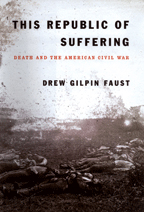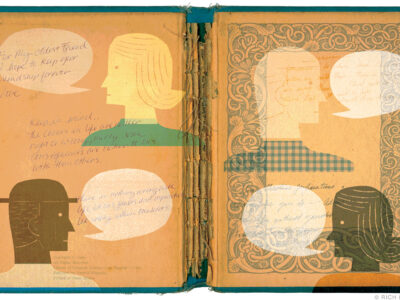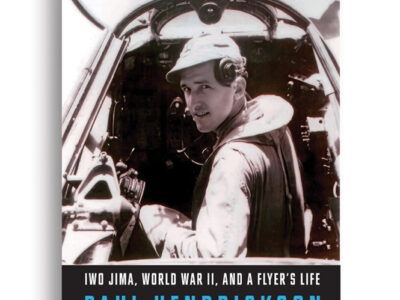The Civil War’s uncivil death.
By Sheldon Hackney

Death and the American Civil War
By Drew Gilpin Faust G’71 Gr’75.
Alfred A. Knopf, 2008. $27.95.
Insulated as we are by the passage of time, the meaning of the Civil War for most of us is that the nation was saved, slavery was abolished, and our notion of the federal government was transformed into its modern guise. In this eloquently written and meticulously observed examination of one aspect of the “brothers’ war,” Drew Gilpin Faust G’71 Gr’75 does not dispute that meaning; she adds to it. For those who lived through that great struggle, there were additional meanings that were shaped by the omnipresence of death.
Some 620,000 Americans perished in military service during the Civil War, a number whose derivation Faust explains in fascinating detail. Two thirds of those deaths resulted from disease rather than bullets, but they were caused by the war nonetheless. In addition, an unknown but significant number of civilians died unnatural deaths because of the military conflict. Those deaths amounted to more than 2 percent of the population of the country in 1860, equivalent to almost 6,000,000 deaths in today’s society. There was more American loss of life in the Civil War than in all the American wars from the Revolution through the Korean War.
Based on 10 years of research—begun when she was a stalwart of the Penn faculty, continued when she moved six years ago to be the transformative dean of the Radcliffe Institute, and miraculously completed last year as she was being chosen to be the president of Harvard—Faust gives the reader a new and more intimate feeling of what it was like to live through that war, either as a soldier or as a civilian with friends and relatives in the military. “Americans North and South would be compelled to confront—and resist—the war’s assault on their conceptions of how life should end,” she writes, “an assault that challenged their most fundamental assumptions about life’s values and meaning.”
The widely shared assumptions of mid-19th-century Americans were that a “good death” occurred at home, surrounded by family, fully reconciled with one’s Maker, and prepared for the “great change” to the afterlife, with respectful preparation of the body for burial in a coffin, and in a cemetery where graves were properly marked with the identity of the occupant. The notion of such a “good death” was assaulted by the realities of battle. The soldier usually died far from home. His body might be mutilated. His identity might not even be known to those who disposed of his body in an unmarked grave or a pit. His family might have to search long and travel far to find out what had happened to him.
Worst of all, the distinction between humans and animals was gravely elided by the burial practices of the exhausted and traumatized survivors of battle. Soldiers were known to have urged their comrades to bury them “deep” so that animals could not root them up and gnaw on their bodies. Soldiers were also known to have pinned on their clothing before going into battle pieces of paper on which they wrote their name and perhaps the name of the person to notify. Because they might be surprised and not foresee battle, they frequently carried a Bible or a notebook in which was recorded their own name and the address of their family. They attempted to replicate a “good death” by carrying in their pockets pictures of family and loved ones. They would be surrounded by effigies of kin even if they were alone and far from home.
The military was not organized at the outset of the war for the task of identifying the dead, recording their fate, notifying next of kin, and burying the bodies in a civilized manner. Out of the war came the system of national cemeteries. A huge effort was made between 1865 and 1871 by the federal government to locate, exhume, and rebury the Union dead in such dedicated cemeteries.
Ironies abound in Faust’s account. For instance, the fact that the federal government did not take responsibility for finding, identifying, and resettling the Confederate dead meant that the job had to be done after the war by Southern volunteers, mostly women. Their organizations and their efforts to treat the dead decently provided additional infrastructure and intensified fervor for the cause of Southern sectionalism.
Faust argues that the very conception of the afterlife was changed by the experience of war. Heaven was no longer imagined as being so distant or so different. The life one would lead there would not be so different from life on earth. On the other hand, it was also true that the religious faith of some Americans was badly shaken.
For Faust, however, the clear vision of the end of life gave life itself a new and enriched meaning. Though she doesn’t talk about it in the book, Faust’s own experience with breast and thyroid cancer, as she has said in some post-publication interviews, enables her to understand sympathetically what soldiers and their loved ones were thinking and feeling as they contemplated the possibility of death. She writes about those feelings eloquently and movingly.
It is hard to imagine that a book focused so relentlessly on death can add much to our understanding of the living, but it does. The reader comes away from this encounter with countless people involved in the Civil War, almost a century and a half ago, with a much deeper sense of what it was like to live then, what it was like to be involved in the war, and what it was like to be waiting anxiously at home.
Dr. Sheldon Hackney Hon’93 is the Boies Professor of U.S. History and former president of the University.




